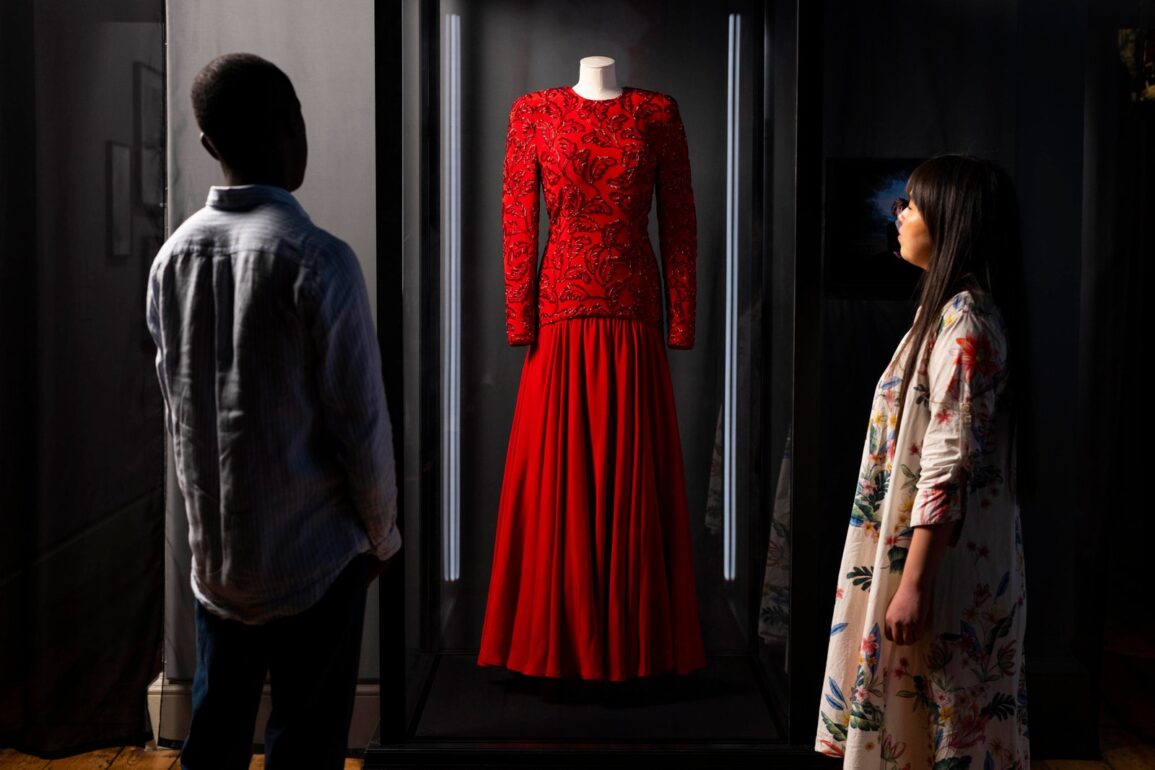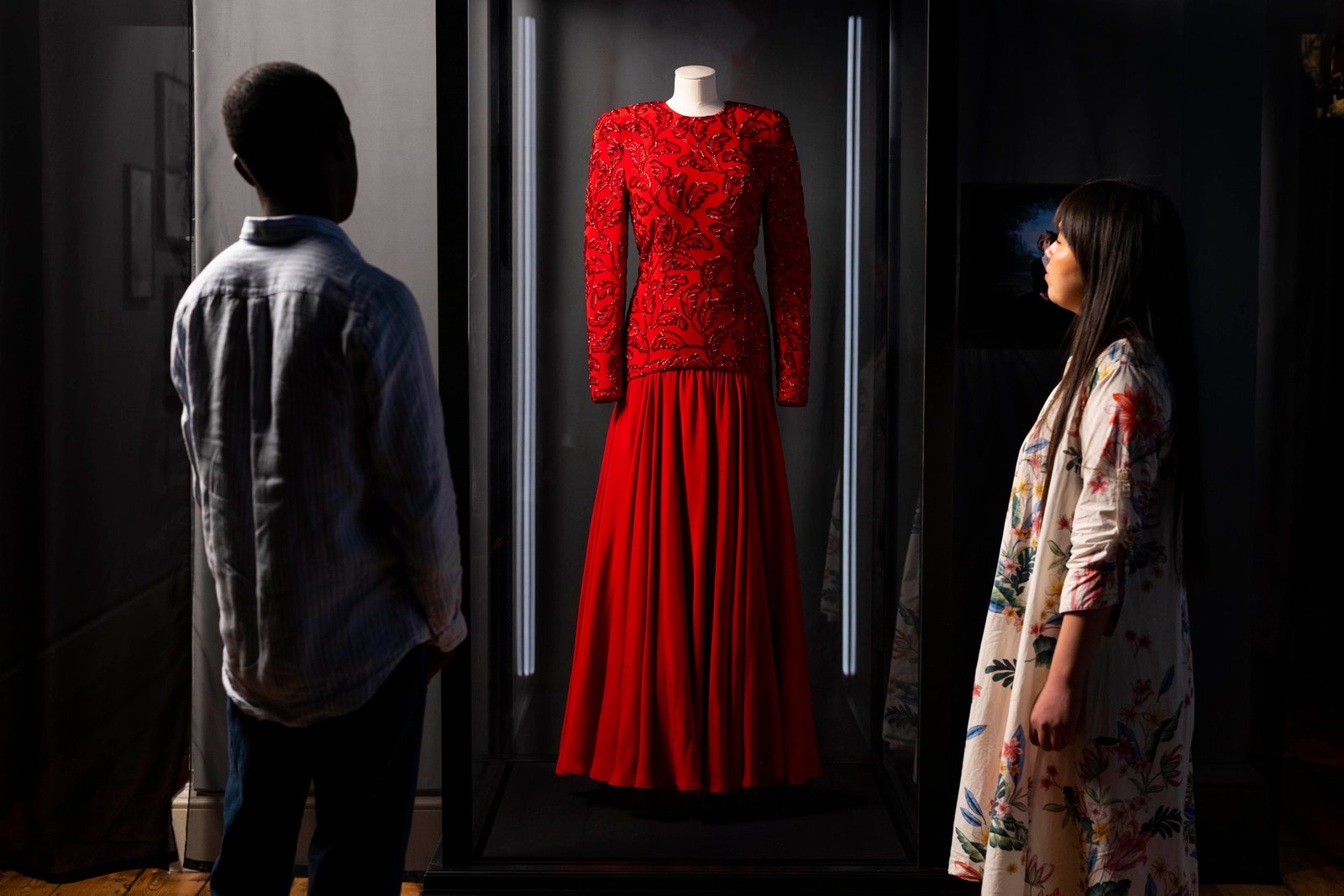A small black-and-white group portrait hangs in the middle of Somerset House’s East Wing Galleries. Installed as part of The Missing Thread – a new show opening on 21 September – it shows nine fashion graduates of Central Saint Martins bashfully grinning in 1985. But ask most diehard fashion fans to name the designers in the picture, and only a white-suited John Galliano sitting in the middle would be easy to identify. Who are the three Black people in the back row? And why don’t we know their names?
Full of works by artists and designers including Chris Ofili, Eddie Chambers, Maud Sulter, Bianca Saunders, Ozwald Boateng, Faisal Abdu’Allah, Christine Checinska and Keith Piper, The Missing Thread redresses this gap in our collective cultural knowledge. Its curators – Harris Elliott, Andrew Ibi and Jason Jules – want to understand what has existed before yet remained curiously forgotten. Below, a breakdown of the highlights from the exhibition.
Broad strokes
A historic lineage of Black talent and major moments in British history are spread over five zones: Home, Tailoring, Performance, Nightlife and a special room dedicated to the archive and work of Joe Casely-Hayford. At the beginning of the show, we are reminded that throughout the 1970s and 1980s, anti-immigrant sentiment, overt racism and the rise of the National Front provoked a new form of cultural pushback in England. Black British style has continued to weave in and around multiple identities and across language, sport, art, music, politics, dance and film. Plastered across the walls are accounts of remarkable achievements reported in the national press alongside omnipresent political and social violence. A headline celebrating Moira Stuart’s role as the first Black newsreader on TV in 1981 is placed next to a story about a mother who fears for her four-year-old son’s life after their home was attacked. “One goal of this is to illustrate that Black British fashion is never just about clothes. The idea that it’s streetwear and kind of adjunct to youth culture is reductive and misleading,” Jules says.
David Parry
Royal salutes
A surprise piece amongst the multi-disciplinary artworks, films and sculptures is a red beaded silk crepe evening dress worn by Diana, Princess of Wales on a state visit to Saudi Arabia in 1986. Designed by Bruce Oldfield, the piece is a symbol of how Black designers have long been at the core of the British establishment. Oldfield, who recently made Queen Camilla’s Coronation gown, started designing for the Princess in 1981, and worked with her well into the early 1990s. Elliot says: “Bruce is one of those faces that I saw as a kid watching The Clothes Show. At that point, when you saw someone Black on TV, the phone would go off, and you’d all tune into the same channel – that was a moment in our culture that I really remember.”
This post was originally published on this site be sure to check out more of their content.










